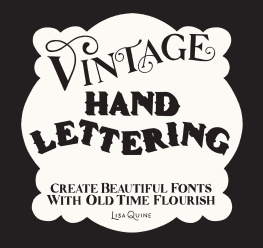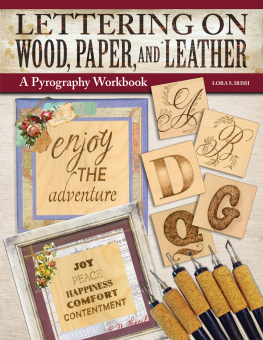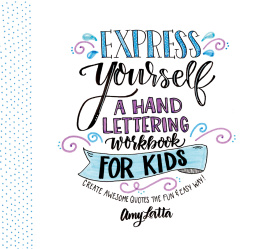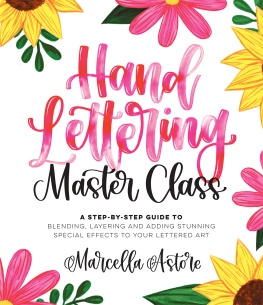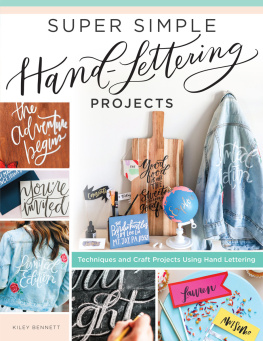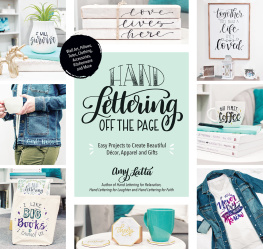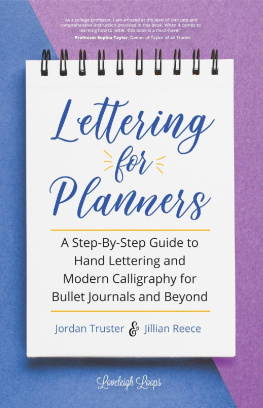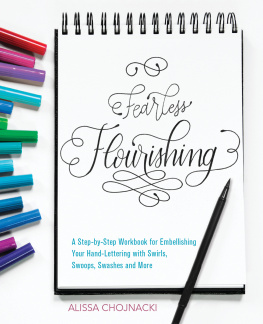Contents
Guide
The author and publisher have provided this e-book to you for your personal use only. You may not make this e-book publicly available in any way. Copyright infringement is against the law. If you believe the copy of this e-book you are reading infringes on the authors copyright, please notify the publisher at: http://us.macmillanusa.com/piracy.
For Mark, my wonderful and profoundly supportive husband.
And to everyone putting in the work to be a self-taught creator, doer, maker, and artist.
I have had the pleasure of knowing and working with Lisa for several years. Lisas work is unique. Somehow, it is both vintage and contemporary. It nods to the Old World and also to an exciting new age of illustration. My favorite works of hers are modern song lyrics ornately decorated as if they were straight out of the 1800s, gilded in gold and leaping from the page. They make you laugh and cause you to interact with and adore artwork in a way only lettering can. Lisa is an example of a modern artist who has successfully segued an age-old craft into a modern career. She has built a life for herself in which she is able to create art every day. She is a true maker.
Who among us wouldnt love to wake up with Lisas skill set flowing freely from our fingertips? She will urge patience and practice, and those words couldnt be truer. Some of us may be born with talent, but skill is an earned craft that rewards only those who give themselves the time to strive for it. Whether you are a hobbyist or a professional artist looking to add a new skill to your tool kit, I urge you: Savor the process. Take delight in the pencil shavings and the eraser smudges.
Lisa has taken years of technical, foundational, and on-the-job training, as well as her failures and successes, and boiled them down (like any expert-level potion maker) to a delicious, palatable concoction. She will teach you the history of these vintage styles and show you how to push the boundaries of the letterforms, one step at a time.
I hope this book and this wonderful author light a new creative spark inside you. I hope you relish each moment.
MAGGIE ENTERRIOS, Illustrator
If youre reading these pages, chances are youve dabbled in lettering or have an interest in getting started. I mean, why wouldnt you? Lettering is an amazing form of art that transforms the written word into an expressive visual experience that comes from your creative mind! I want this book to be a helpful resource that teaches you how to hand-letter in styles inspired by my favorite time periods in art and culture, like the Victorian era, art nouveau, and art deco.
These days, learning how to hand-letter in these gorgeous older styles can be tricky. If you started from scratch, youd have to track down books from a hundred years ago on eBay or spend a ton of time researching and practicing on your own. This book contains ten different vintage-style typefaces with multiple variations of each, all taught by someone from our own modern age who has been lettering in these styles for seven years!
I studied graphic design in college and immediately fell in love with my typography classes, but I also had a soft spot for the foundational classes, like drawing and painting. I didnt know that I could merge the two together until I created an Instagram account after graduating and discovered the fascinating world of lettering. From there, I obsessed over practicing different styles of lettering outside of my full-time job in advertising.
Eventually I started posting my work and attracting some smaller projects as well as a modest Instagram following. The small projects grew into larger projects and even murals, until I was able to finally start my own business. I now have the privilege of speaking at conferences, painting murals, and working on vintage lettering-based projectsand what really helped me grow as a lettering artist was exploring my infatuation with decorative, vintage typefaces.
Vintage lettering and typography include some of the most beautiful and ornate typeface styles. Unlike modern calligraphy, lettering requires you to draw each letter, which takes a significant amount of time and attention to detail. When youre drawing the letters by hand, theres something meditative and rewarding about the patience required to sketch out each detail. Then theres even more satisfaction in seeing the words and layout come together after all your hard work.
This book is your one-stop shop when it comes to learning how to letter various styles within the vintage-inspired realm. The book relies on an easy step-by-step process of crafting all twenty-six letters of the alphabet in ten overall styles, each with multiple variations of that style within the chapters.
Each chapter follows the same formula to make learning the styles a breeze! First, well take a look at just a couple of letters and see how to draw them step-by-step. (Styles are much more digestible when you begin with only a letter or two.) Next, youre going to take what you learned by practicing those first couple of letters and draw the whole alphabet. And dont worry, there will be examples of each letter to help guide youits like taking a test, but you have all the answers! Finally, we wont leave you hanging with a bunch of letters. Well apply that style to a hand-lettered piece of art by crafting a layout using all the variations of that chapters style. The chapter compositions themselves have also been inspired by lettering from the late 1800s and early 1900s.
One of my favorite things about lettering is that you dont have to use the fanciest tools to draw in the fanciest styles. In fact, all you really need to practice lettering in this book are five tools: a pencil (regular or mechanical), a large eraser, a smaller pen for details (Sakura Pigma Micron 03 or smaller, or a Sharpie fine-point marker), a pen for thicker lines (Paper Mate Flair Felt Pen in medium point or Sakura Pigma Micron 08 or higher), and a large-tipped black marker, like a regular Sharpie or Crayola black marker, for larger fills. You might already have all these!
If youre like me and get intimidated by a blank page, or you feel the need to keep everything as perfect as possible, I suggest sticking to just a pencil for as long as you feel comfortable. You can always come back to your sketch later to ink it in.
There are some other tools that might make your life a little easier, but these are all optional items. One of my favorite tools is a pencil eraser. Its great for erasing errors on the tiny details, which there will be a lot of throughout this book. Another optional tool is a white gel pen. Its the best when you want to go back and add details over a filled-in letter. A couple of more tools to have on hand include a ruler, tracing paper or scrap paper, and colored pencils or markers for coloring in the compositions at the end of each chapter.
I want to leave you with three more tips before you start your journey into the wonderful world of ornate lettering.

